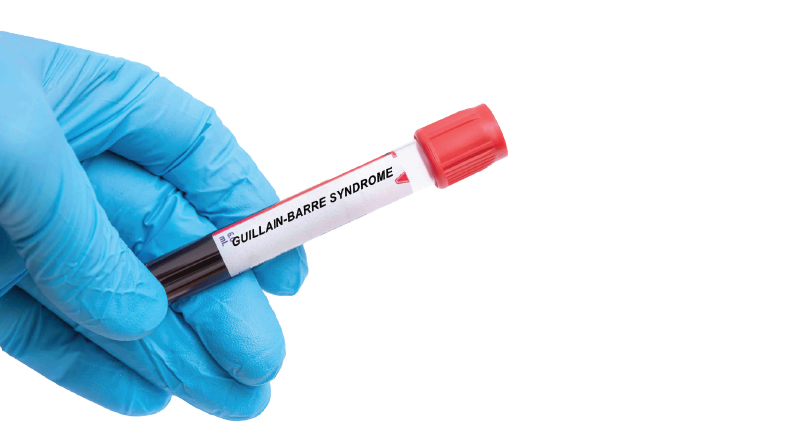The deep carbon sink
-
- from Shaastra :: vol 04 issue 04 :: May 2025

Reducing carbon emissions isn't enough to meet climate goals. Efforts are under way, with the help of oceans, to remove atmospheric carbon.
In the summer of 2020, scientist Franziska Elmer thought of starting a podcast about the seaweed that gives the Sargasso Sea its name. "Sargassum is a really unique seaweed," says Elmer. Unlike other seaweeds, some species of this golden-hued alga float freely on the ocean surface, making it an ideal candidate for a climate change solution.
Hosting 'The Sargassum Podcast' led her to Seafields Solutions — a company that cultivates Sargassum, a macroalga, to make products that help fight climate change. The company's goal is to farm the photosynthetic alga out in the open ocean and sink its dried, carbon-rich biomass product to the seafloor.
Six tonnes of wet-weight seaweed will be required to remove one tonne of CO2.
"The Sargassum is at the surface [of the] ocean, with really small amounts of it sticking out in the air. So, most of the carbon will be taken up from the ocean," observes Elmer, Seafields' Head of Science. Removing carbon dioxide from the ocean surface creates a deficit in the ocean, which then pulls more from the atmosphere. This is the premise behind a portfolio of 'ocean-based' or 'marine' carbon dioxide removal (CDR) solutions in the offing. The solutions can be nature-based, like seaweed cultivation, or technological, like extracting CO2 from seawater.
Ocean-based CDR is mediated by the natural transfer of CO2 from the atmosphere into the ocean in what's called the air-sea carbon flux. The flux occurs over a large expanse of the ocean. "Large volume for contact is one of the reasons why the ocean presents scalable approaches to carbon dioxide removal," says Matthew Long, an Adjunct Scientist at the Woods Hole Oceanographic Institution (WHOI) in the U.S. Long is the Co-founder and CEO of [C]Worthy, a non-profit that researches marine CDR solutions.
DEVIL AND THE DEEP BLUE SEA
Climate change experts agree that cutting down emissions cannot contain global warming: CO2 will have to be removed from the atmosphere. The Intergovernmental Panel on Climate Change (IPCC) says in its latest Assessment Report that the deployment of CDR to counterbalance residual emissions is unavoidable for achieving 'net zero', when CO2 emissions equal removals. There are various ways to achieve net zero: phasing out fossil fuels, afforestation and carbon capture (A bridge 'solution').
"On top of that, we want to remove carbon from the atmosphere — not ten tonnes, hundred tonnes, thousand tonnes, but million tonnes, billion tonnes because that is the only way you're going to make a difference," says Kilaparti Ramakrishna, Director of the Marine Policy Center at WHOI. Estimates suggest that 6 to 10 giga (billion) tonnes of CO2 will have to be removed every year by 2050 under 1.5-2°C scenarios (bit.ly/CDR-state). For context, the world emitted a record 37.4 gigatonnes of CO2 in 2024 (bit.ly/CO2-stats).
According to a recent McKinsey report, delivering 6 to 10 gigatonnes could create a CDR industry that is worth up to $1.2 trillion annually by 2050. The report considers all kinds of CDR solutions, including land- and ocean-based as well as nature- and technology-based. "A diverse portfolio of CDR solutions would be required," it says (mck.co/4iT1XdJ). "No single solution would be sufficient to achieve targeted removals."
Since the industrial revolution, the ocean surface has seen a 30% increase in acidity.
The ocean comprises 72% of the planet's surface area, says Long, and there are technologies that hold promise to achieve climate-relevant quantities of removal. Ocean CDR technologies should be able to remove CO2 from the atmosphere effectively, he says, "without causing significant deleterious impacts on marine ecosystems". Out in the Caribbean, Elmer is knee-deep in seaweed to see if it can meet these goals.
WADING INTO SEAWEED
There are advantages to using Sargassum for carbon removal, says Elmer. One, it grows very fast, doubling in size in just two weeks. And because it doesn't attach, it need not be cultivated near the shore or using longlines typically required to grow seaweeds. "That makes it really suitable for large farms in the middle of the [Atlantic] Ocean because that is where Sargassum already grows on its own."
Seafields has developed an aquafarm to cultivate Sargassum. It is also studying how the seaweed naturally decomposes on the seafloor and its impacts – positive or negative – on the deep-sea ecosystem. Seafields has assessed two experimental sites in the waters of Barbados' exclusive economic zone – at depths of about 1,500 m and 4,500 m – for baseline data. The pilot test for sinking small amounts of Sargassum at these sites was planned for 2024, but funding delays have pushed it to later in 2025.
To sink the biomass, Sargassum will have to be harvested, processed and compressed into bales. This makes it easy to measure how much seaweed goes in the deep sea, says Elmer, and by extension how much carbon goes into the deep sea. Carbon makes up about 30% of the seaweed's dry weight. Its C-to-N ratio is around 35:1 — meaning it takes up 35 molecules of carbon for each nitrogen molecule used, says Elmer.

Accounting for the emissions during harvesting, processing and shipping the bales out to sea for sinking, six tonnes of wet-weight seaweed will be required to remove one tonne of CO2, estimates Elmer. Seafields hopes to take the technology to the gigatonne-removal scale with floating farms in the South Atlantic one day. "Then we would have farms big enough to grow about six gigatonnes of Sargassum a year." Since the company hasn't harvested Sargassum for CO2 removal yet, that seems a long way off.
As Seafields, which has raised $3.32 million so far, develops its nature-based solution, some start-ups are already beginning to realise carbon removals using technological methods.
C IS FOR CARBON
Direct Ocean Capture is a technology to remove CO2 from seawater and return the carbon-stripped water to the sea. It's like Direct Air Capture used to remove CO2 from air. Despite the high concentration of CO2 in air (428 parts per million in March 2025), the presence of other gases makes Direct Air Capture an energy-intensive and costly removal process.
The ocean absorbs almost 30% of all anthropogenic emissions and it has 150 times more CO2 per unit volume than air, says Zamin Syed, Founder's Associate at SeaO2. Founded as a spinoff from the Delft University of Technology in the Netherlands in 2021, SeaO2 is experimenting with an electrochemical direct ocean capture technology.
The technology first separates seawater pumped from the sea into a smaller and bigger stream. The smaller stream of water is split into an acid and a base using a bipolar membrane stack. The acid is then added into the bigger stream, changing the pH and causing the CO2 in the seawater to gas out. The base is added to the decarbonised water, before the water is let back into the ocean. "The ocean and atmosphere are pretty much always in equilibrium. So, if you cause CO2 deficit, it reabsorbs from the atmosphere," says Syed.
The CO2 that bubbles out in this carbon removal process is vacuumed and fixed into some form or other. SeaO2 has demonstrated the proof-of-concept of its technology. The prototype has been functional at the start-up's R&D facility since 2023. "We converted our first batch of CO2 into concrete," says Syed.

SeaO2 is building a pilot plant to scale up its technology. In phase 1 of the pilot, nearing completion, it aims to remove 25 tonnes of CO2. When the plant is fully up and running by the end of 2025, it is expected to function at a capacity of 250 tonnes of CO2 removal per year. Late in 2024, the start-up announced it had raised over €2 million in seed funding towards the pilot. It next aims to remove one mega (million) tonne of CO2 by 2030 and one gigatonne by 2045. One gigatonne is the annual emissions of CO2 from aviation.
Electrochemical removal is "fairly new" among all the methods of ocean carbon removal out there, like ocean alkalinity enhancement, iron fertilisation and biomass sinking, says Syed. SeaO2, he believes, is forerunning the field not only in Europe but worldwide. "There's only a few other players." One key player is Planetary Technologies.
THE ANTACID TEST
As 2022 rolled around, Will Burt left his academic position at the UAF College of Fisheries and Ocean Sciences in Alaska, U.S., to work in industry. The ocean scientist joined Planetary, in Canada, to be part of a climate change solution. Ocean Alkalinity Enhancement (OAE) is a scalable solution to remove CO2 using oceans. In OAE, alkaline minerals are added to the ocean to convert CO2 into carbonates and bicarbonates. Bicarbonates are the predominant form of dissolved inorganic carbon in the oceans.
OAE imitates Earth's natural phenomenon of rock weathering. When rocks weather, they release minerals such as calcium and magnesium. This alkalinity neutralises the CO2 that washes away in the rain as carbonic acid. But because oceans' CO2 uptake now exceeds the natural alkalinity input, ocean waters have turned acidic. In over 200 years since the industrial revolution, the ocean surface has undergone a 30% increase in acidity, impacting marine life.
Planetary uses magnesium hydroxide, a compound found in nature, as the source of alkalinity and releases this "antacid" into coastal waters. "The majority of the uptake of CO2 actually will happen within a few kilometres of the coastline," says Burt, Vice President – Science and Product. The start-up uses existing infrastructure such as wastewater treatment and power plants to release the alkalinity, which raises the pH of the seawater and deacidifies it.
The start-up's proof-of-concept field trial, conducted in Cornwall, U.K., in 2022 used brucite (the mineral of magnesium hydroxide) mined in China. This not only ramped up the project's costs but also carbon emissions from mining and transportation. The limited scale of the project – addition of four tonnes of magnesium hydroxide solution over three days – and deployment emissions meant that the project did not remove carbon (go.nature.com/41RdIdy).
In 2023, Planetary started a multi-year trial back at home. At Halifax, Planetary achieved CO2 removal from the get-go, removing over 100 net tonnes. "We delivered the first ocean alkalinity enhancement credits on that project," Burt says. The 138 tonnes are the world's first net OAE credits.
Then in 2024, the pilot removed 1,000 net tonnes of CO2; the process of delivering these credits is on. "In 2025, we're aiming for 10,000 tonnes of removal," says Burt. The company has won the XFACTOR Ocean Award of $1 million awarded in the XPRIZE Carbon Removal competition concluded in April 2025. It was selected from a cohort of 20 finalists for removing over 1,000 net tonnes of CO2 in the closing year of the competition's four-year run.
Planetary is leading the way in carbon removal using ocean alkalinity enhancement but it is not the only pebble on the beach.
COASTAL CARBON
Vesta is an ocean-based CO2 removal company that deposits ground olivine – a naturally occurring alkaline mineral – on or near shores. The mineral, dubbed 'green sand', slowly dissolves into the ocean by wave and tidal action, converting CO2 into bicarbonates. The bicarbonates provide carbon removal storage on the order of a 100,000 years, says Zach Cockrum, Vice President of Policy and Partnerships.
The U.S.-based company has conducted two pilot projects so far — in New York in 2022 and North Carolina in 2024. In the first-of-its-kind field trial, the company sprinkled 650 tonnes of olivine sand on a beach in Southampton, New York. The second trial involved releasing 8,200 tonnes of olivine sand in coastal waters off Duck, North Carolina, with an aim to remove 5,000 tonnes of CO2. "We are demonstrating that olivine is capturing carbon," says Cockrum. The trials are being independently analysed by Hourglass Climate, a non-profit research organisation, for the carbon removal efficacy and environmental impacts of olivine.
Carbon can be removed by accelerating rock weathering from geological to human timespans. The approach works on land and in the ocean.
Being a magnesium iron silicate, the olive-green mineral releases magnesium, iron and silicon on dissolution in seawater. But olivine also contains impurities. It releases trace metals such as nickel and chromium into the water, which could impact marine ecology. At its project site in Southampton, Vesta carried out experiments studying olivine's impact on oysters and horseshoe crab eggs. The nickel uptake by oysters, which are highly sensitive to environmental pollutants, says Cockrum, was by no means alarming.
CRUSHING IT
To remove carbon, Vesta accelerates rock weathering by taking it from geological to human timespans. Its approach, known as Coastal Enhanced Weathering, is the marine equivalent of Enhanced Rock Weathering used for carbon removal on land. In enhanced rock weathering, crushed rocks are added to croplands. Minerals in the rocks react with CO2 and rainwater to form bicarbonate ions. Though the atmospheric CO2 removal happens on land, the bicarbonates generated eventually reach the ocean by way of rivers.
The method is being deployed in India using basalt, a volcanic rock like olivine. Founded in 2022, Mati Carbon spreads basalt dust containing magnesium, calcium and other micronutrients on agricultural lands for soil nourishment and carbon removal. Headquartered in Texas, U.S., Mati works with farmers in the Global South, including those in Madhya Pradesh, Chhattisgarh and Jharkhand. In April 2025, Mati won the grand prize of $50 million in the XPRIZE Carbon Removal competition for removing over 1,000 net tonnes of CO2.
Alt Carbon is a homegrown CO2 removal company working in the tea estates of Darjeeling, West Bengal. Founded in 2023, Alt Carbon aims to upscale to five million tonnes of annual CO2 removal by 2030 using crushed basalt. "This year we will be removing 10,000 tonnes," says Co-founder Sparsh Agarwal. In 2024, Alt Carbon became the first Indian start-up to receive $500,000 from Frontier, an advance market commitment, as part of a pre-purchase agreement of carbon removal credits generated by enhanced rock weathering.
CARBON CREDIT SCORE
To sell removal credits on the carbon market, companies have to quantify, report and verify how much carbon they have removed from the atmosphere and stored for long durations. That's easier said than done in the emerging field of ocean CDR. "The ocean is a highly dynamic environment. It's a fluid and effects of an intervention applied locally don't remain locally," explains Long. The quantification process needs to establish that the CO2 drawdown happened due to the intervention and not the Earth's carbon cycle.
That is where [C]Worthy comes in. As long-time ocean researchers, Long and colleagues were watching the growth of start-ups implementing ocean CDR when they realised that the tools they had been using could be modified to quantify CO2 removal. "What we're doing basically is adapting sophisticated computer models," says Long. The tools that [C]Worthy is developing, including those for monitoring, reporting and verification of net carbon removal, are open source.
For now, [C]Worthy is focusing on technological solutions such as ocean alkalinity enhancement and direct ocean removal. "The complexity of the geophysical system is lessened when we're not relying directly on biology for the carbon removal," says Long.
[C]Worthy will go beyond monitoring the carbon removal of the technologies to study their safety aspects. The technologies are not without their risks, after all. According to a 2022 report (bit.ly/Ocean-CDR), while ocean acidification is well understood, "the opposite process of alkalinization and how it impacts marine life remains largely unknown". Sinking seaweed could lead to localised depletion of oxygen and eutrophication of the water where the biomass sinks and decomposes.
Another key consideration for permanent CO2 removal is its cost, which is in the range of hundreds of dollars per tonne. Burt says that early trials are not economically viable because there's not enough carbon removal and credit generation, but costs are likely to come down dramatically as the technology upscales. At Vesta, Cockrum says, "we have a pretty credible path to below $100 a tonne for CO2 removed and even down to $50" at large scales of carbon removal.
On the surface, it is counterintuitive to tamper with oceans, which suffer from acidification, rising sea surface temperatures, declining fisheries and plastic pollution (Richard Thompson on ways to address the plastics pollution problem). But marine CO2 removal can potentially tackle the twin problems of ocean warming and acidification while reducing atmospheric emissions.
The ocean carbon cycle is not a completely understood system, admits Long. "But the climate crisis is urgent." This is the pivotal decade, Long says, not for the deployment of CDR technology but for laying the groundwork.
Have a
story idea?
Tell us.
Do you have a recent research paper or an idea for a science/technology-themed article that you'd like to tell us about?
GET IN TOUCH














